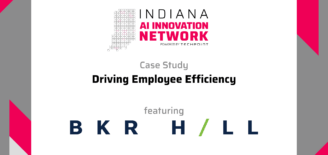8 Marketing and Technology Trends Disrupting Business in 2015
Every year presents new technology and future possibilities that are initially difficult to comprehend, specifically when it comes to consumer behavior. Looking back on it now, 2014 turned out to be the year of mobility, treating the consumer as an individual, sharing economy, and data security.
 This year, 2015 will be no different. From mobile commerce to natural language processing, the world is going to change drastically and with it, consumer behavior.
This year, 2015 will be no different. From mobile commerce to natural language processing, the world is going to change drastically and with it, consumer behavior.
1) Rise of the Data-Driven Marketer
While I was at Salesforce Marketing Cloud every leadership report the content team published had one recurring theme: data. Leaders surveyed for the reports all expected to see an increase need for hiring and supporting data analytics personnel. Welcome to the age of the marketing engineer/technologist/geek!Gartner has backed this claim up, constantly saying, “By 2017 the CMO will spend more on information technology than the CIO.” Information technology and marketing teams will need to work even closer in the next year as that investment expands.
According to IDC Chief Analyst Frank Gens, “We are shifting into a new gear in the industry’s adoption of the 3rd Platform, as cloud, mobile, big data, and the Internet of Things — and an exploding number of solutions built on them — will account for one-third of all IT spending and 100% of IT growth in 2015.”
2) Further Development in Deep Learning
Amy Webb of WebMedia Group wrote on HBR.org that she believes “artificially intelligent computers are now capable of deep learning using neural networks. Toward the end of 2014, Google researches unveiled a new project that uses neural networks and deep learning to identify multiple elements of a scene without human assistance.”
Yep. You know what that means. First, software learning how to think on its own, and then… Terminator.
3) Ultimate Realization of the Power of Collaboration
The collaborative and sharing economies took the world by storm in 2014. From Uber’s $40 billion valuation to the massive growth of AirBnB (+$10B valuation), we are witnessing a revolution in the way businesses are built and technology is used.
We can’t discuss the Collaborative Economy without pulling in Jeremiah Owyang of Crowd Companies, a brand council for large companies to tap the potential of the sharing economy and maker movements. He has five predictions out now for 2015:
Not that you need them, but here are five more examples of how the Collaborative Economy model is a very big deal:
- See how the Collaborative Economy is expanding into nearly every sector of society (healthcare, logistics, municipal, corporate and more). Watch the growth with Owyang’sCollaborative Economy Honeycomb chart.
- To get an idea of the massive amount of funding flowing into this space (which has surpassed funding to popular social networks) see this spreadsheet.
- Just how disruptive is the Collaborative Economy movement to incumbents? See some stark statistics (ex: 65% of San Francisco taxi cab business has migrated to ride services like Uber, Lyft, and Sidecar) in this deck.
- More and more brands are moving into this space. Their adoption is clipping upward. See a timeline of brands,
- Crowd Companies, a council for large brands to tap into the Collaborative Economy movement has experienced over 100% growth. See Crowd Companies.
4) Building a Mobile-First Mentality
Multiple industry analysts and thought-leaders have been talking incessantly about the rise of mobile over the past few years. We all know that mobile is, and will be, extremely important to any business model (see ESPN). However, the larger trend toward mobility isn’t just confined to the increase in consumer usage of mobile devices. It is also seeing businesses building products and strategy around a mobile-first mentality.
According to the trusty Launch Ticker app, “Overall app usage grew 76% in ’14 according to mobile analytics firm Flurry; in ’14 shopping, utilities & productivity, and messaging apps experienced 174%, 121% & 103% growth respectively & were key drivers; on @Android alone the shopping category increased by 220% launch.co/story/overall-app-usage-grew-76-in-14-according-to-mobile-analytics.”
Gartner also weighed in on their annual tech trends report. David Cearley, vice president and Gartner Fellow, explains that phones and wearable devices are part of an expanded computing environment. “Increasingly, it’s the overall environment that will need to adapt to the requirements of the mobile user,” Cearley says. “This will continue to raise significant management challenges for IT organizations as they lose control of user endpoint devices. It will also require increased attention to user experience design.”
5) Internet of Everything
We know that mobile is important. Millions upon millions of smartphones will be shipped in 2015. When it comes to wearables, however, the story shouldn’t be focused solely on the number of units, it should be focused on the data that is being produced, as well. That’s where you really start to see the momentum driving the trend. In 2015, we should be preparing for the trillions of different data points being tracked off the Fitbit you are wearing or your Nest digital thermostat.
Mary Meeker of KCPB believes that FitBit is leading the charge. The digital health tracker has gone from tracking 47,000,000,000 steps in 2011 to 2,400,000,000,000 in 2013. The trillions of data points being mined have “the potential to yield patterns that help solve basic or unsolvable problems.” I also see this bridging to an issue in data security.
6) Data Security
Data breaches were huge news in 2014. There was Target, Sony, Chase, and Adobe, just to name a few (check out the World’s Biggest Data Breaches infographic). Consumers are feeling the sting. According to PEW the majority of American consumers have an issue with control over data to begin with. “Fully 91% of adults ‘agree’ or ‘strongly agree’ that ‘consumers have lost control over how personal information is collected and used by companies.’ This includes 45% who ‘strongly agree’ and 46% who ‘agree’ that consumers have lost control. Another 6% ‘disagree,’ while only 1% ‘strongly disagree’ with this sentiment.”
Look for further developments and investment in the world of data security. When consumers complain entrepreneurs listen.
7) Siri Will Be Everywhere
This doesn’t mean Apple will be taking over the world (again). Siri is just one example of the ever-increasing world of natural language processing. Facebook is making moves in this space by acquiring speech recognition startup Wit.ai, a platform of over 6,000 developers all working towards the goal of building natural language processing for the Internet of Things. The acquisition is meant to beef up their messenger app, but there is more involved.
Robert McMillan at Wired correctly asserted: “On the surface, it seems like a bit of an oddball acquisition. Wit.ai is used by more than 6,000 software developers, most of whom don’t have that much to do with Facebook. This guy used it to build voice-activated Christmas tree lights; these guys to soup up a microwave. But according to a source familiar with the deal, the Wit team’s language processing smarts will give a big boost to one of Facebook’s most important projects: Messenger, the instant-messaging app it spun off from its main social network app last year.”
Google is also making moves in the world of natural language processing and virtual assistants.”Google is quietly starting to release a new SVPA function for Android users,” Amy Webb writes in this post at HBR, “It automatically detects when you’ve parked your car, marks your parking spot for you on a Google map, and helps get you back to it once you’re ready to start driving again. All without you explicitly asking it to do so.”
Would I love some voice-activated Christmas lights in 2015 and an app that told me where to park for the Christmas Eve service in my hometown? Of course.
8) China
Alibaba, Baidu and Sohu have all joined the ever-evolving list of top technology companies in the world. Many people believe that 2015 will be the year for China. According to a recent report by the IDC, China is poised for massive growth in many sectors throughout the country. Mobile technology is by far one of the top investments. Over 500 million smartphones will be sold in the country next year — and Chinese vendors will be making 85% of those devices. Also, China’s technology market will make up 43% of all tech sector growth worldwide in 2015.
This post could be changed every month to list a different announcements or shifts in the technology and marketing movement. That is the beauty of technology and the world of consumer behavior — it’s always evolving.
Do you agree? Disagree? What marketing and technology trends do you think will have the biggest impact on 2015?



